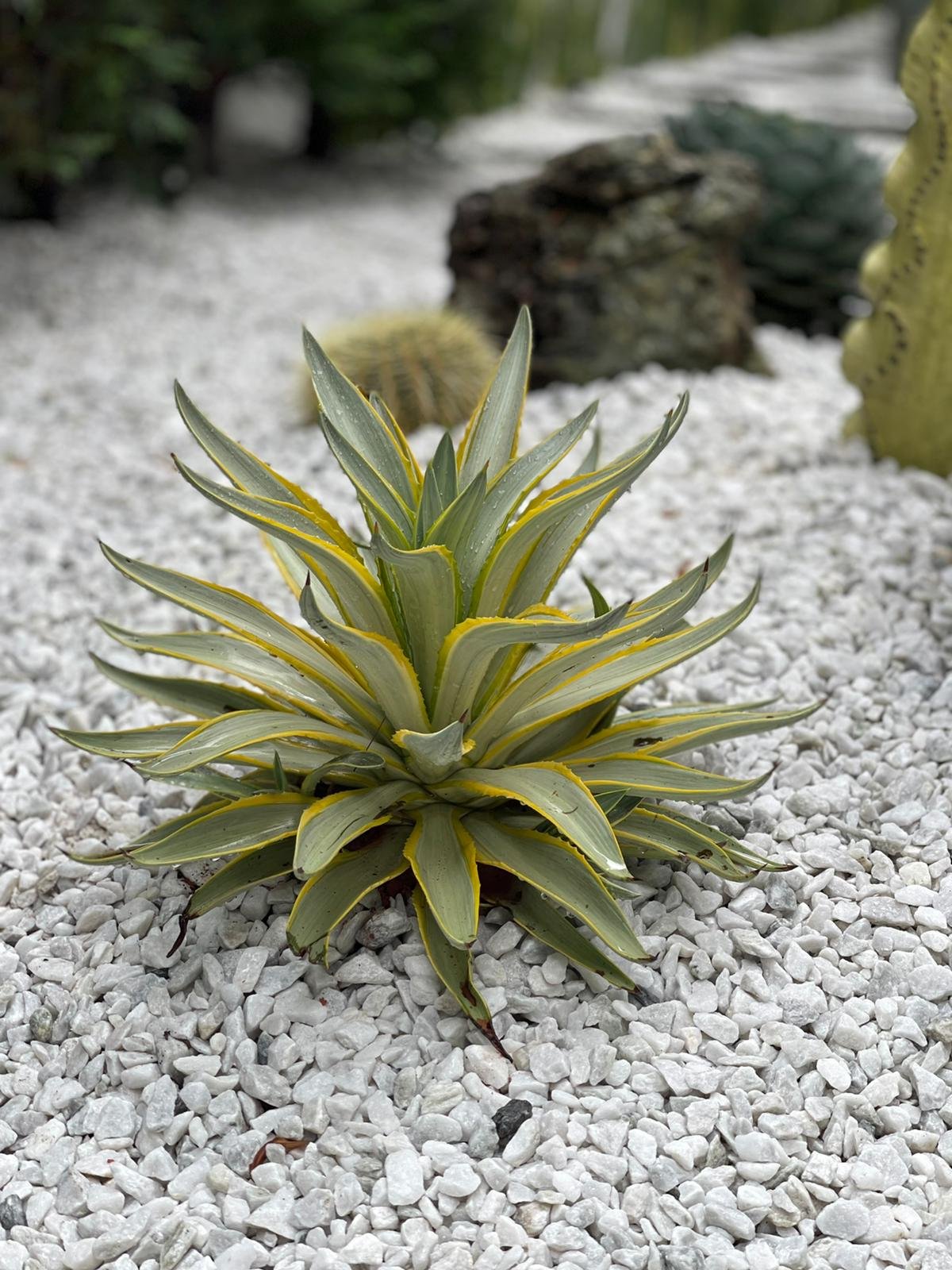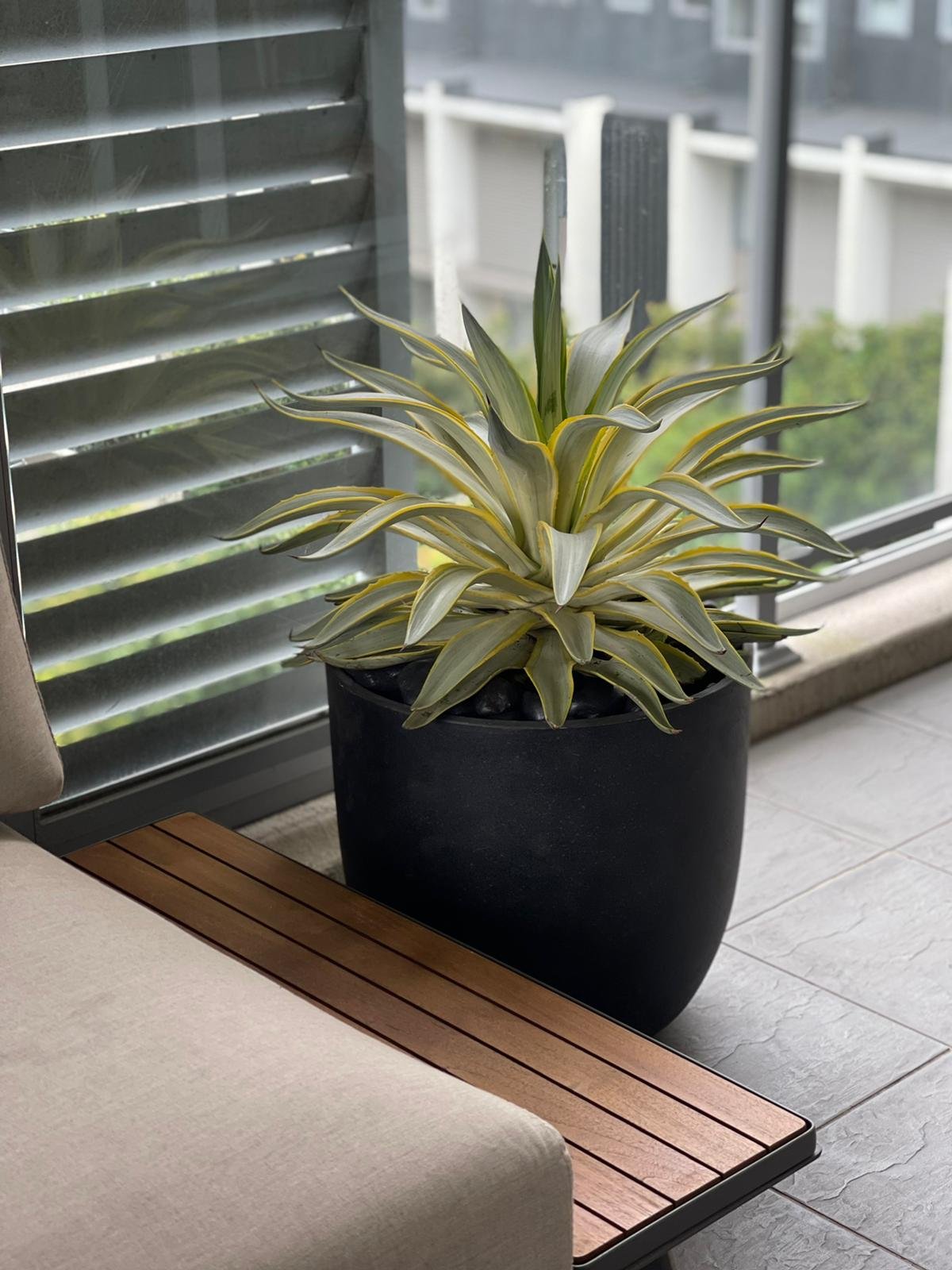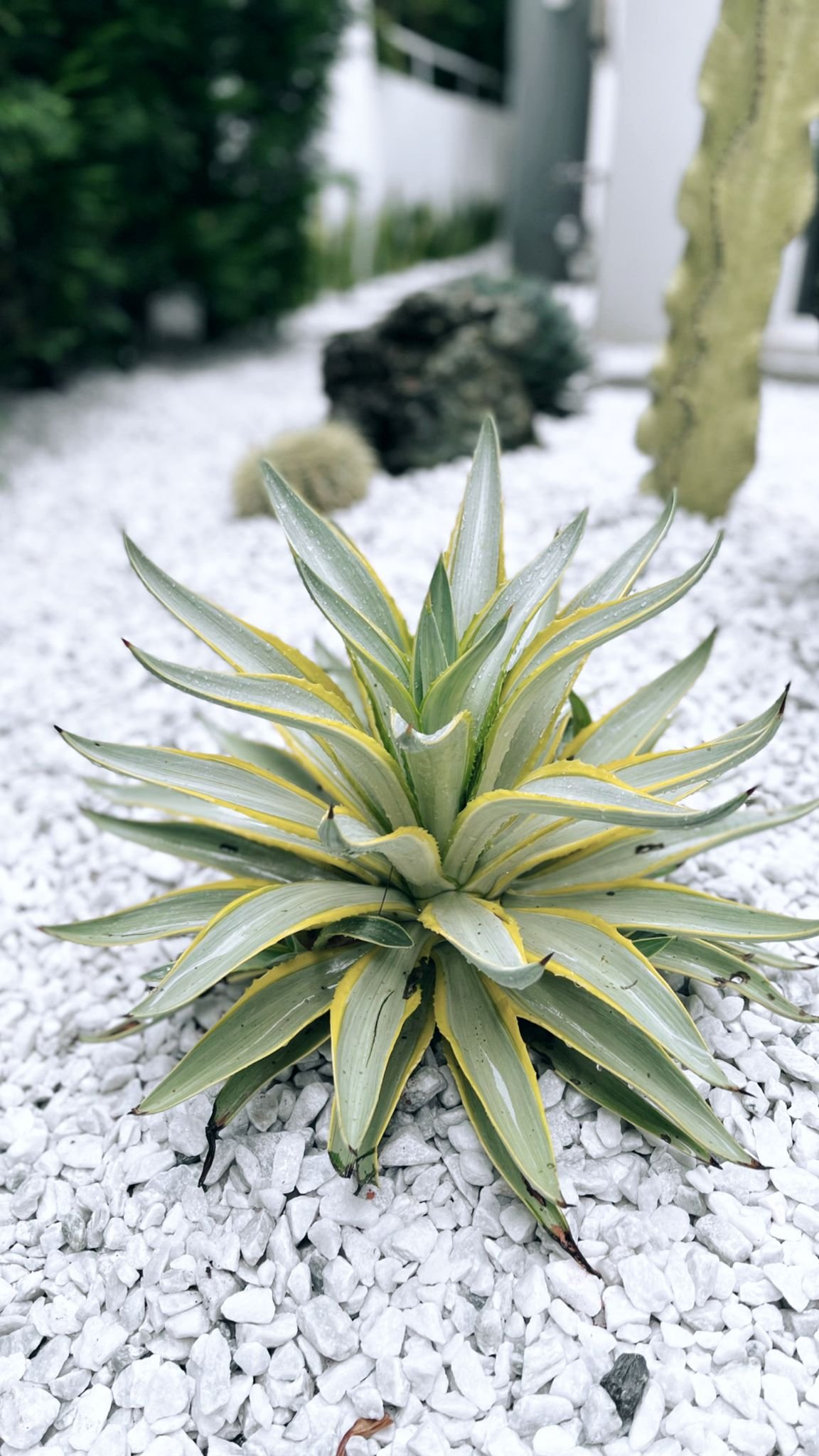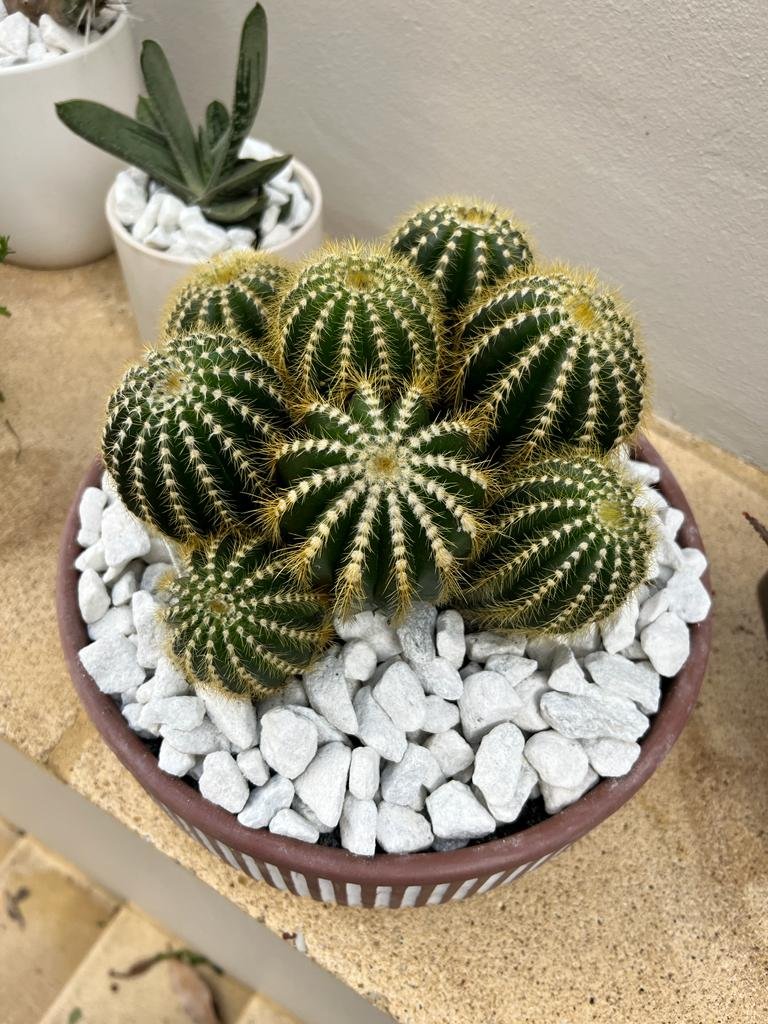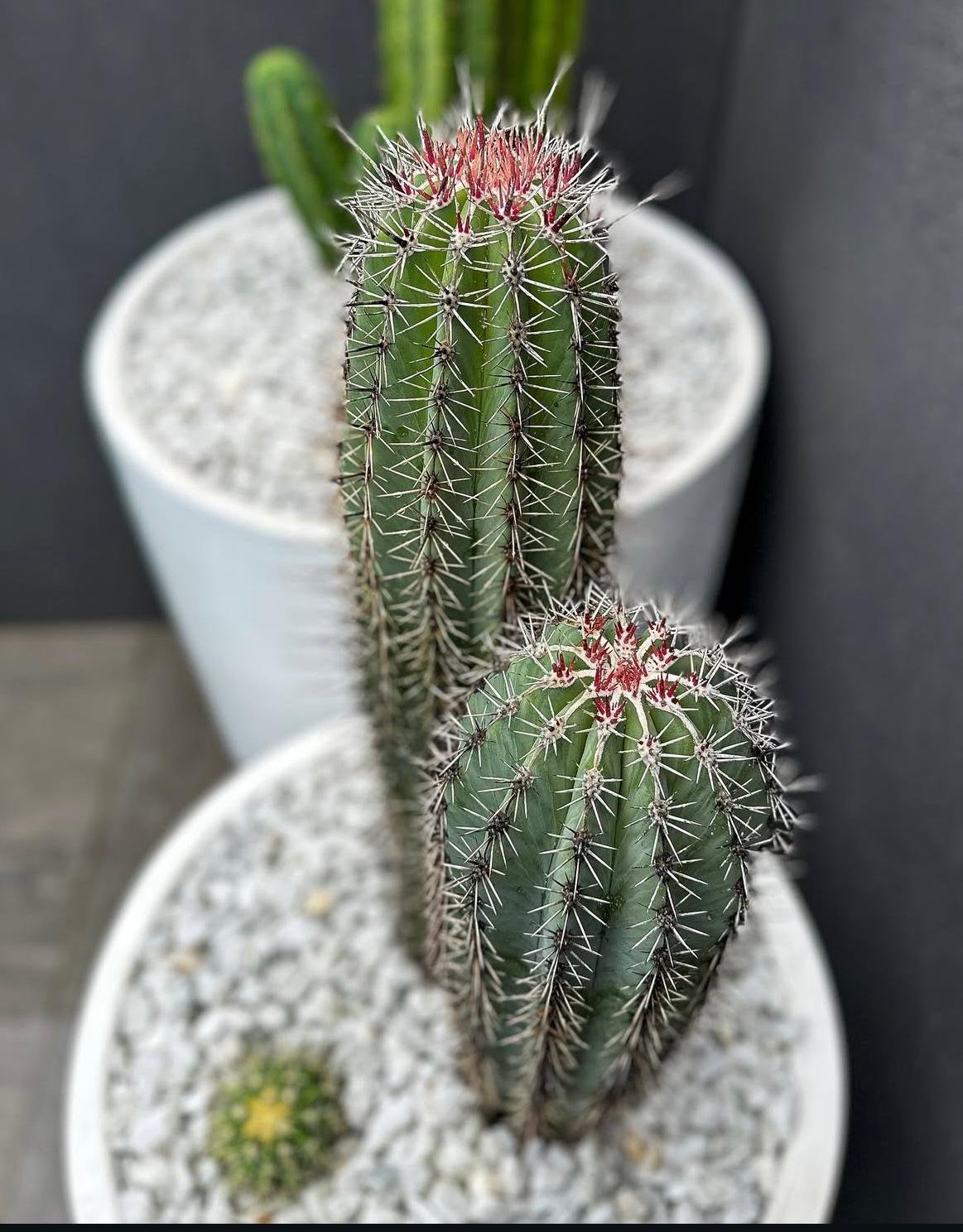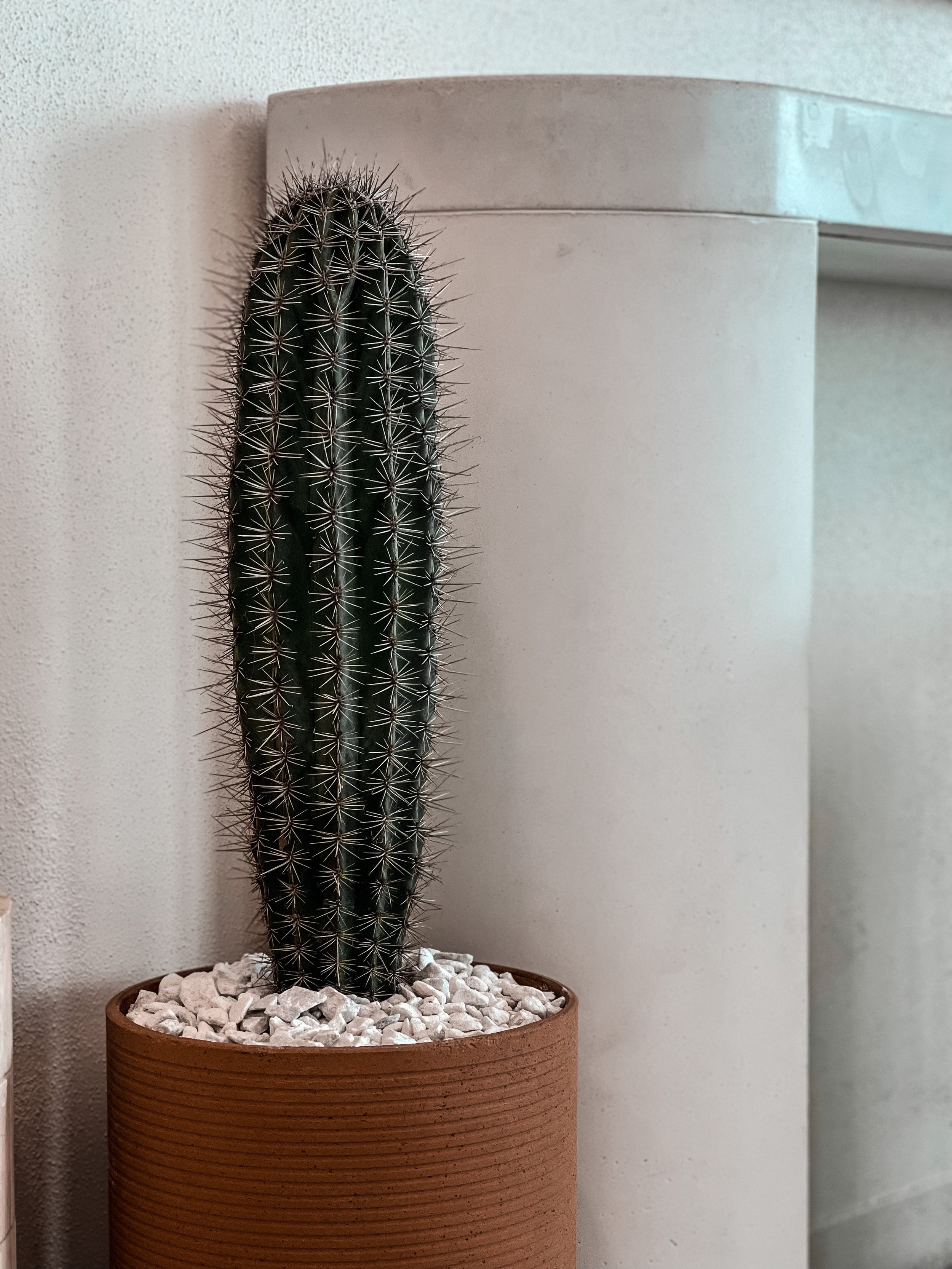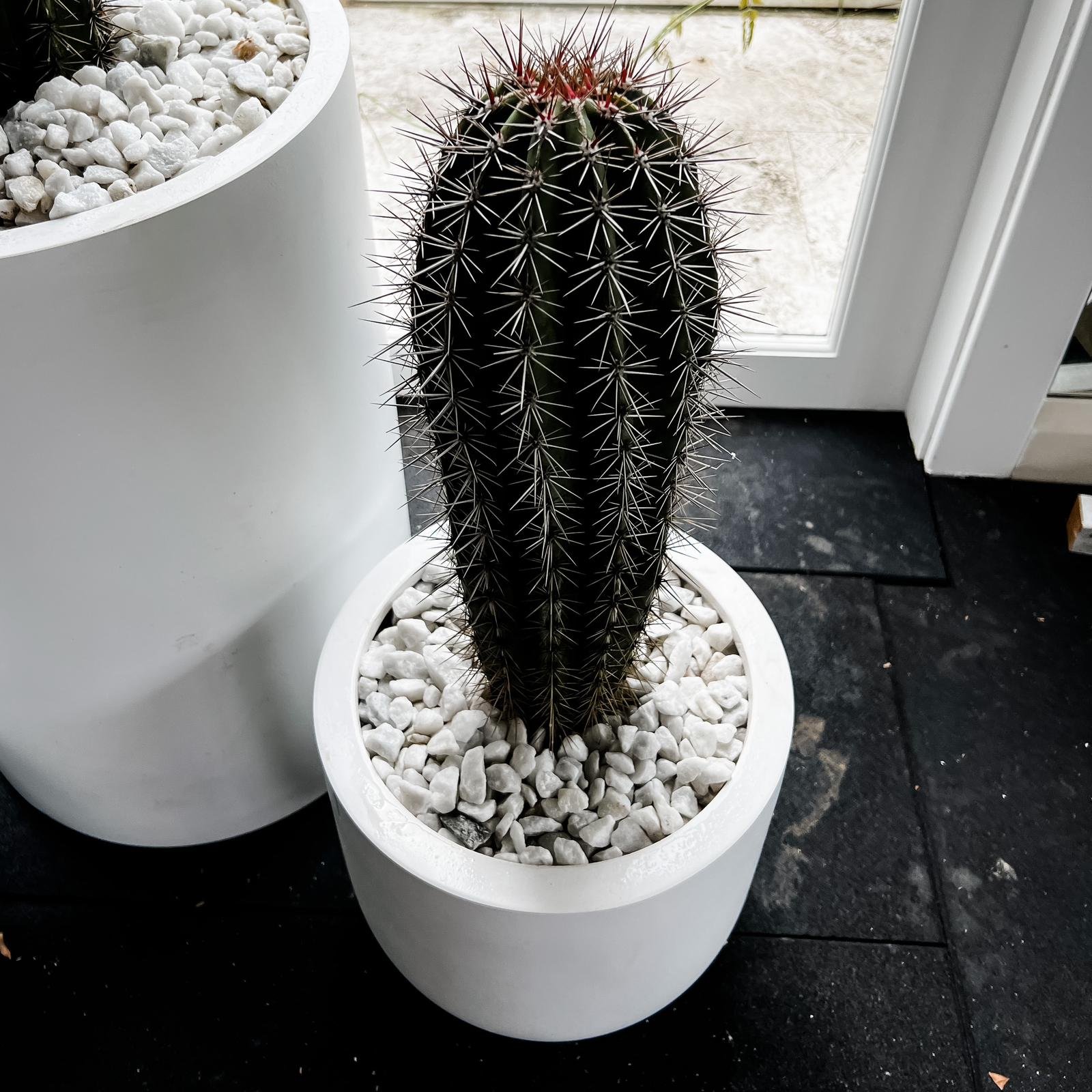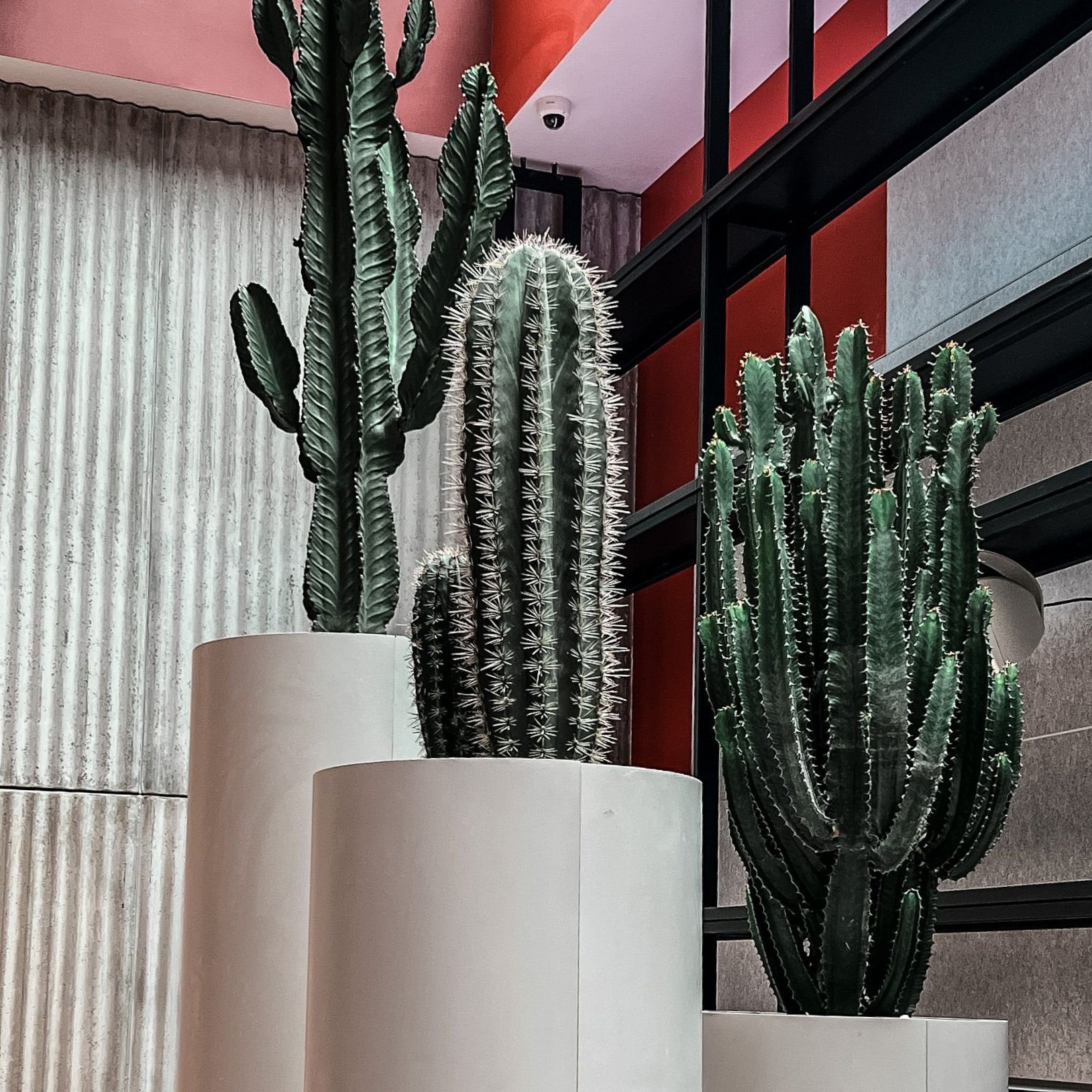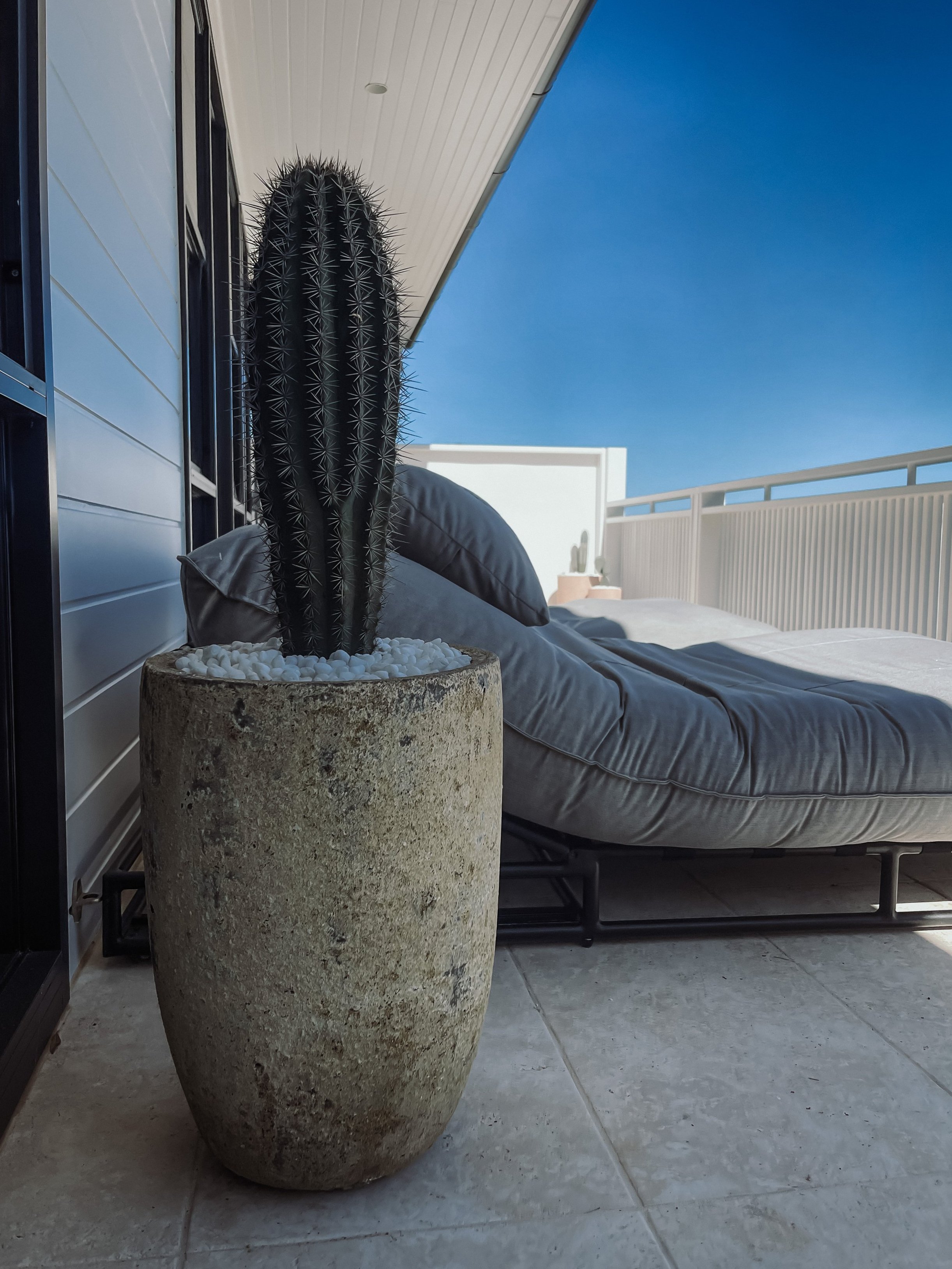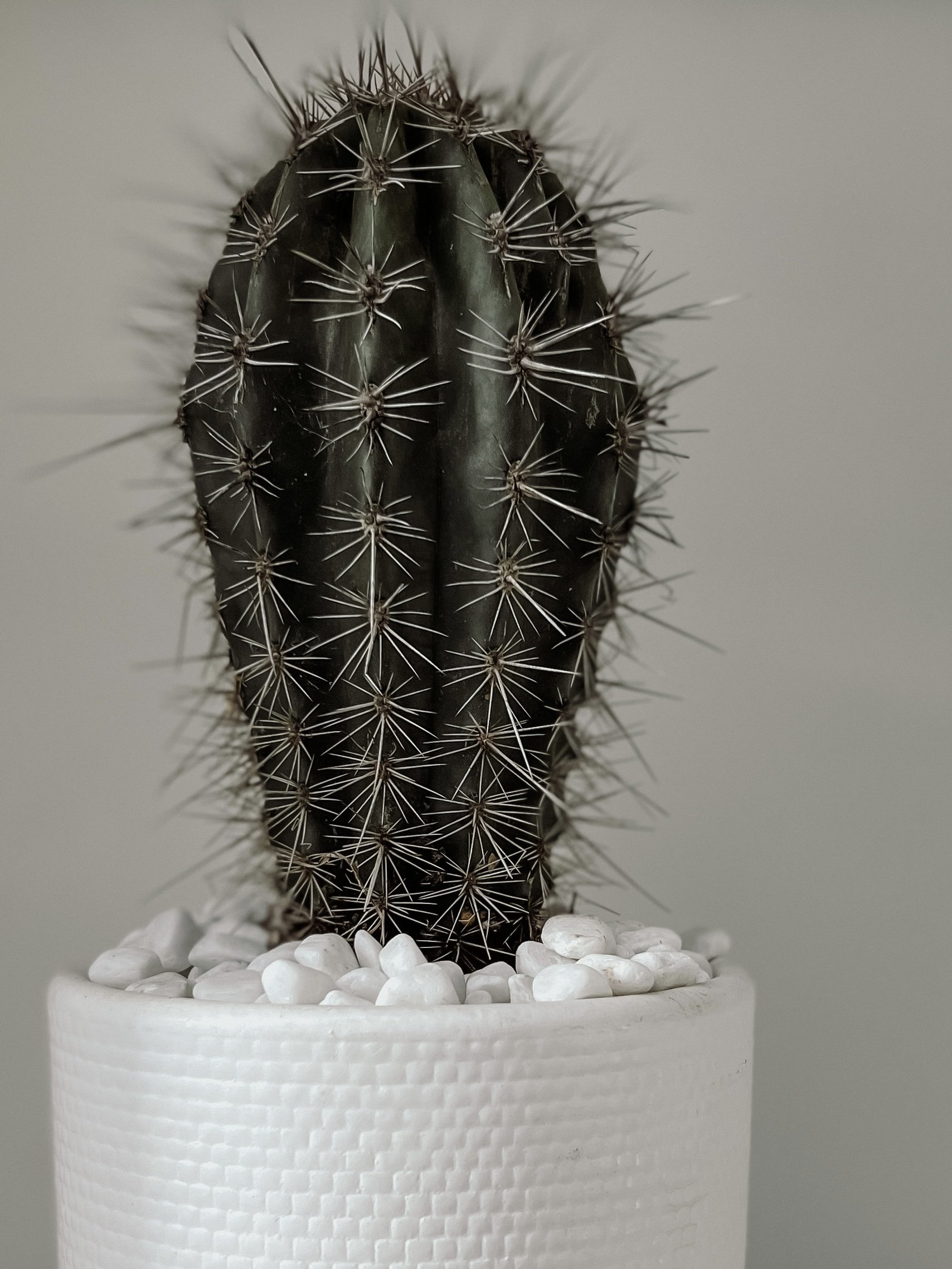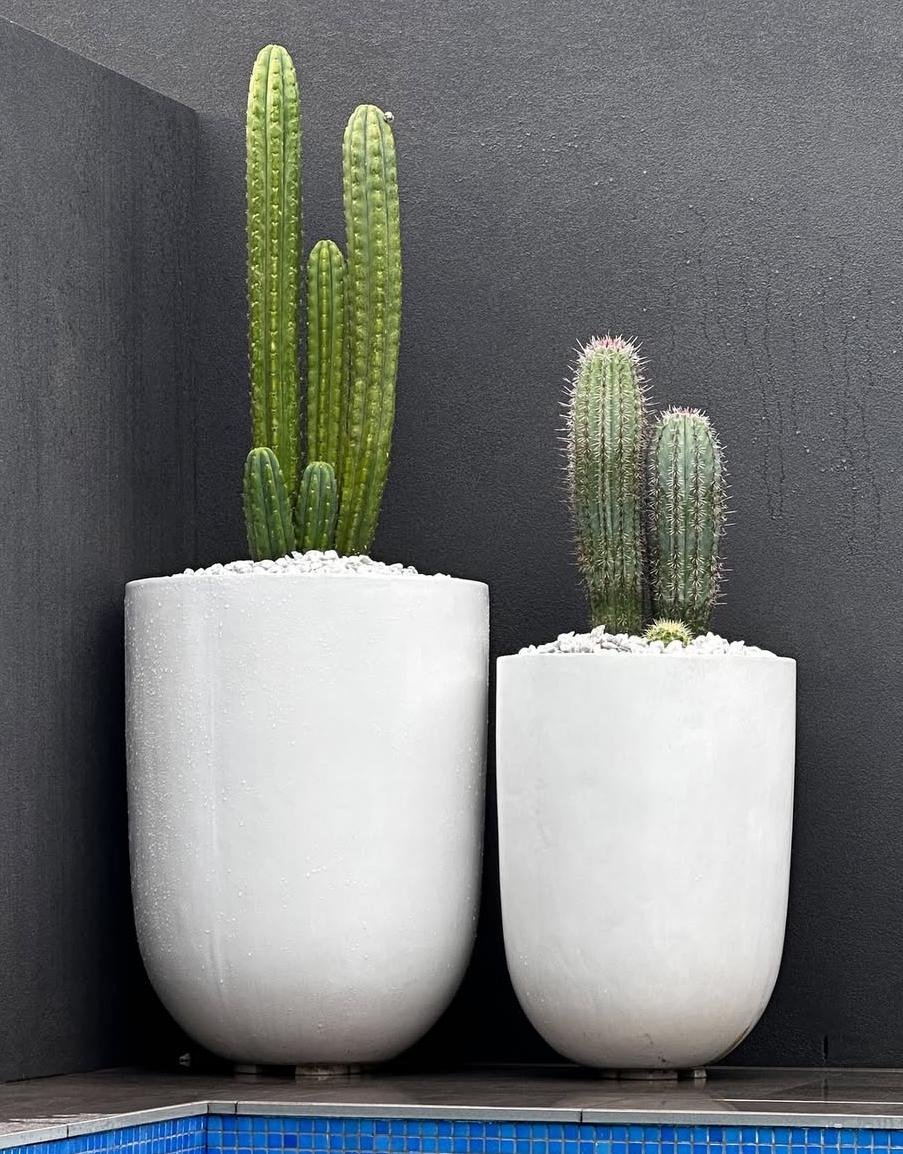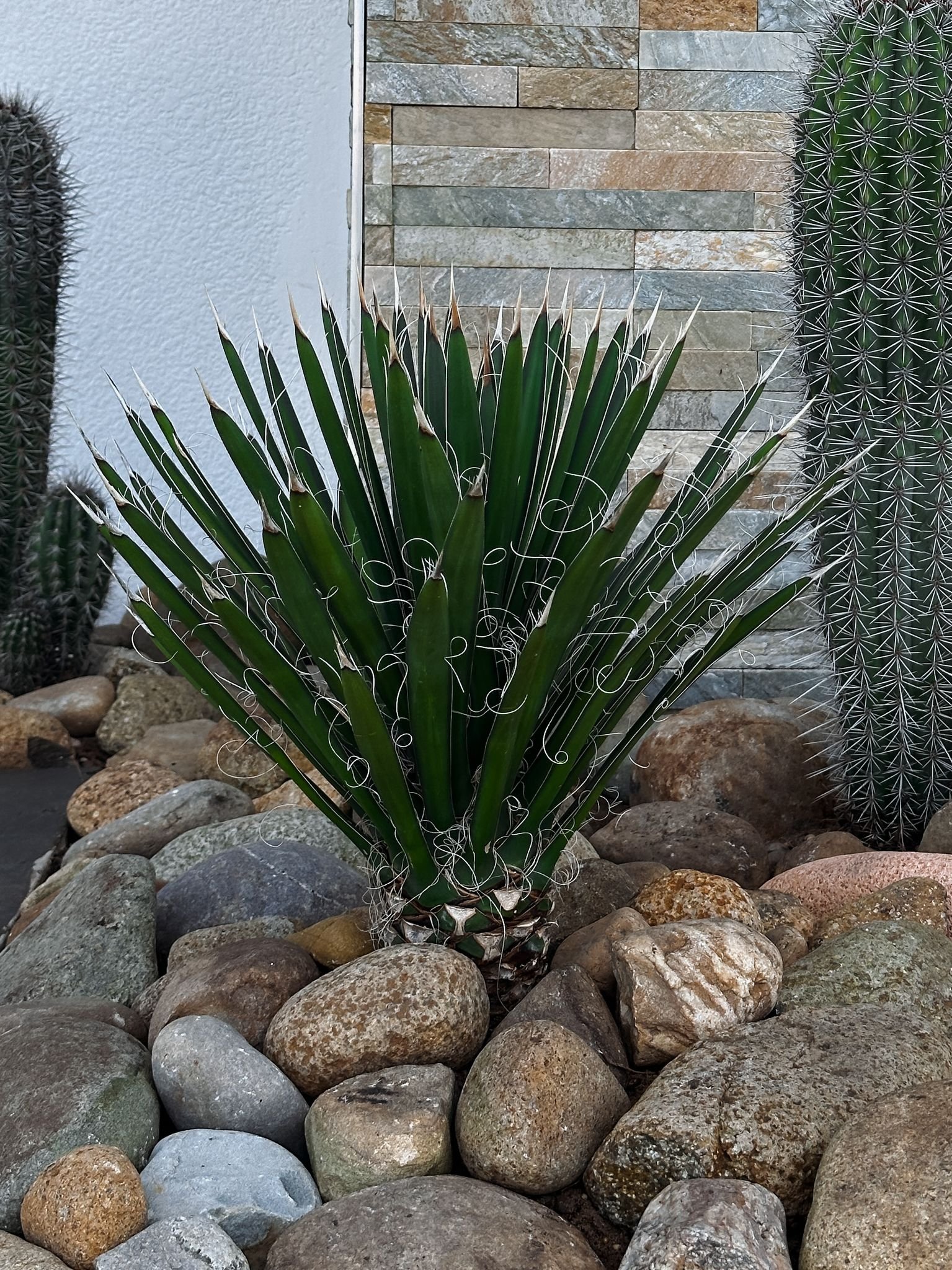Agave Galactic Traveler
BOTANICAL NAME
Agave Desmettiana (Variegata)
ORIGIN
Southern America
WATER
Water when soil is almost dry from spring to early autumn, seldom in Winter (I’m cool to be caught in the rain if I have good drainage)
OUTDOORS
I’m flexible - I can adjust to full day sun, half day sun or a bright shaded area
INDOORS
Not typically recommended, however, can thrive in a BRIGHT indoor position
FROST TOLERANT
Low tolerance, sensitive to frost
GROWTH RATE
Slow, growing up to 100cm tall and 80cm wide
POPULARITY
Very rare
FLOWERS
Flowers before death, 8-10 years of life
PETS & CHILDREN
Low risk to children and pets
CONCACTUS FOR ALL INQUIRIES REGARDING PLANTS “UNAVAILABLE” ONLINE
Ready to spike up your space? Our products come in plastic pots, but fear not!
Get in touch post-purchase and we'll pot-ify your cactus for maximum appeal.
*IMAGES ARE CV STOCK EXAMPLES
The Galactic Traveler, also known as the variegated Agave Desmettiana, is a striking yellow and silver evergreen succulent that adds a unique touch to gardens, planters, and large pots. The Cactus Vision team loves using this plant to compliment other cacti with similar yellow hues or spines, especially in palm springs or mediterranean gardens.
Noted for its urn-shaped structure, the Galactic Traveler grows symmetrically upright and produces fewer marginal spines than most agaves we stock. Although it may be susceptible to snails when young, it becomes deer and rabbit resistant once matured. To prevent agave weevil infestation, it is recommended to treat the plant proactively in gardens with multiple agaves.
Like many agaves, the Galactic Traveler only flowers once in its lifetime, typically around 8-10 years of age. After flowering, it produces seeds and bulbiferous offsets along the stalk of the flower, which can be easily removed and planted. This 3-metre-high flowering process is a sight to behold and makes the agave's decade-long life cycle well worth it. Don't be too quick to remove this agave when it flowers, as it provides a great opportunity to propagate new variegated offsets and continue to enjoy this unique plant for years to come.
